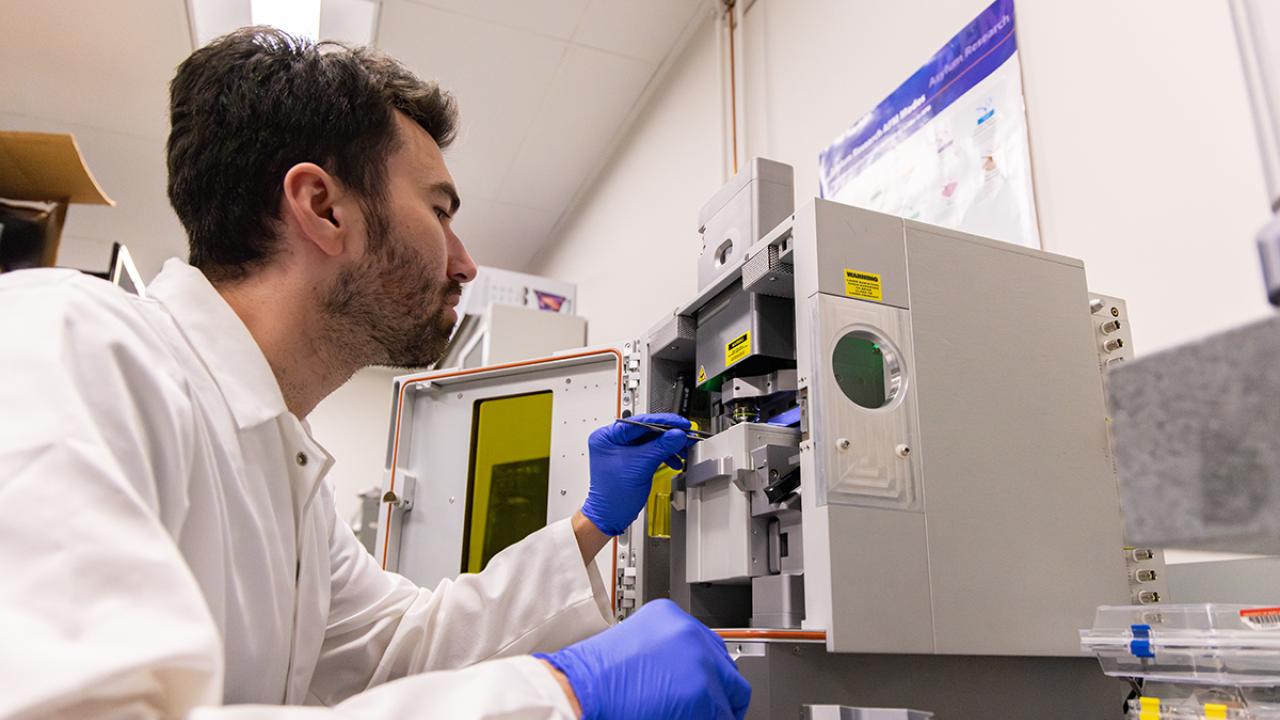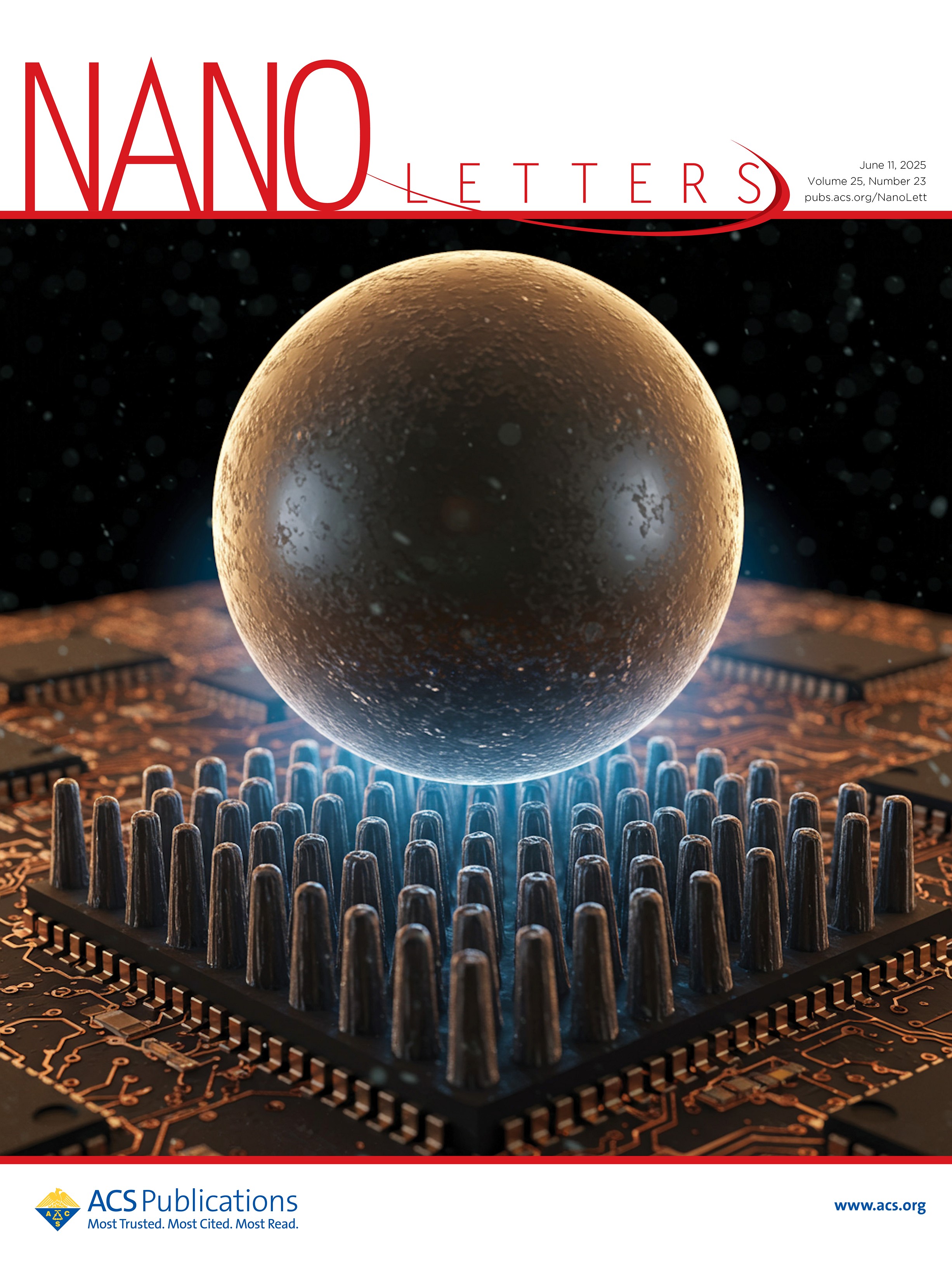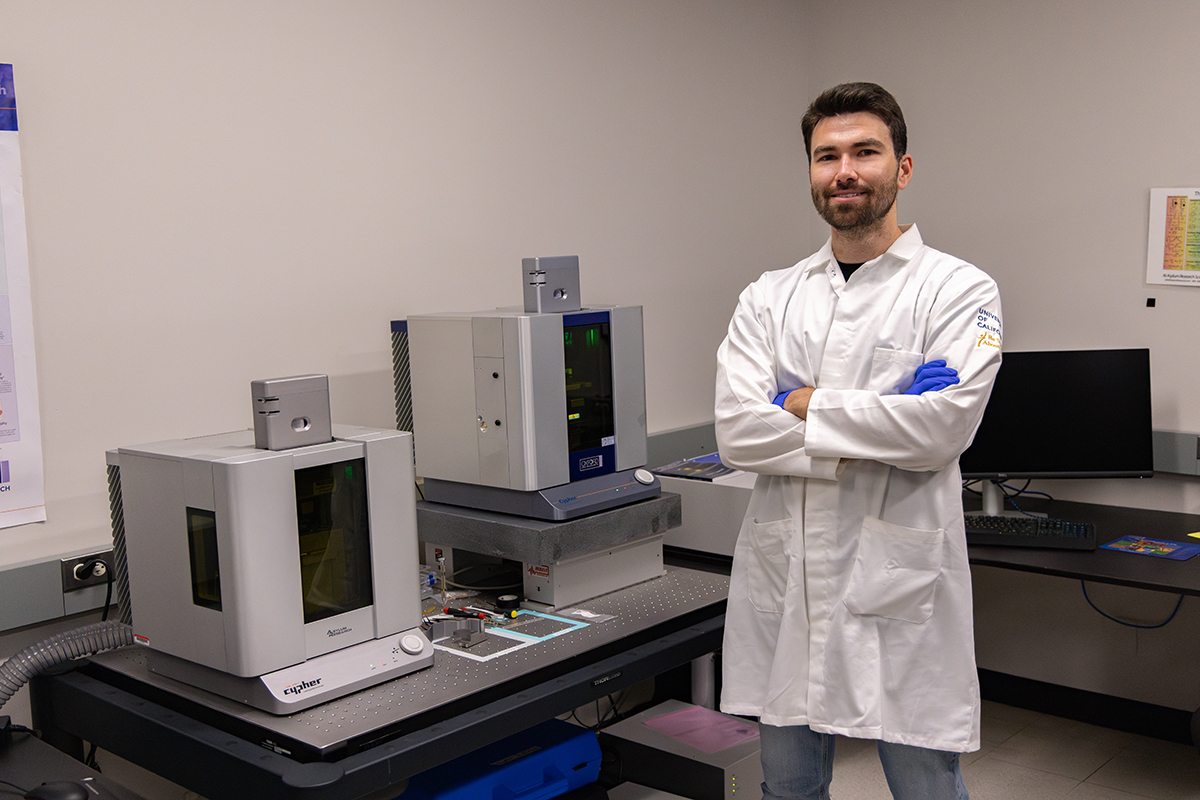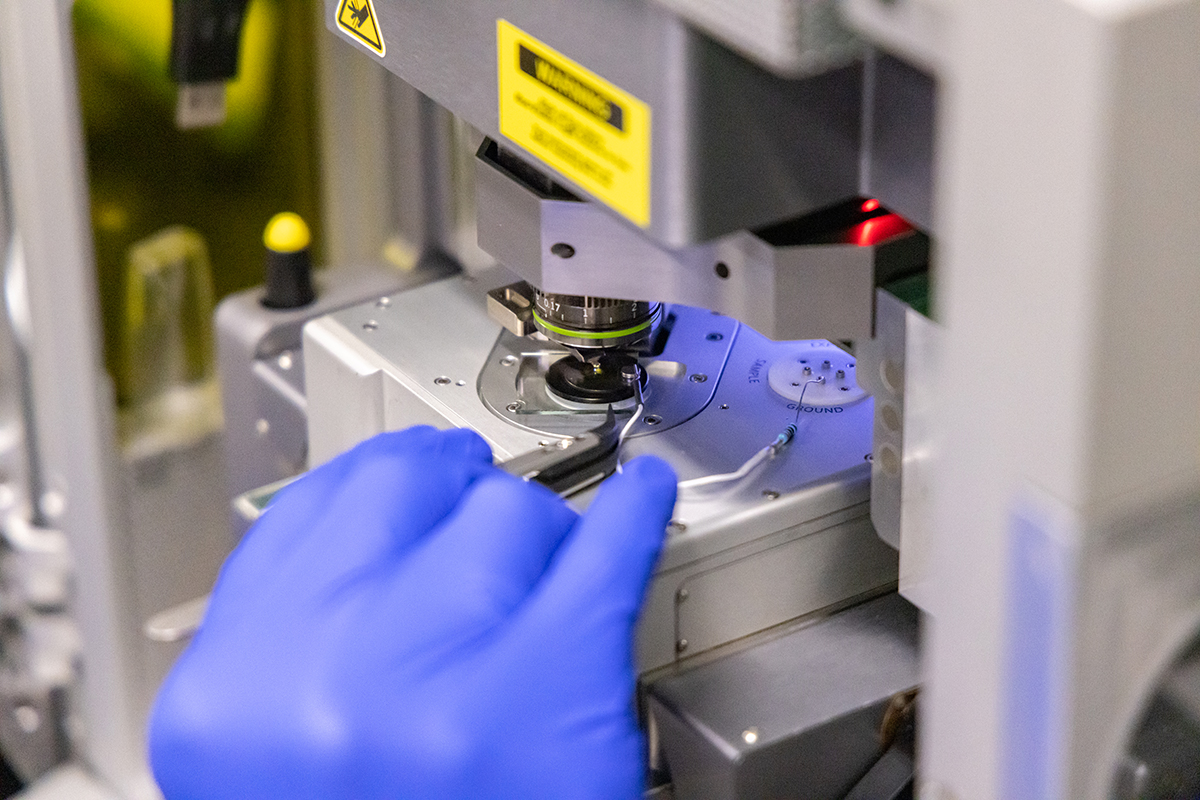
Controlling the (Casimir) Force

The Power of Nanostructures
Electrical and computer engineering Ph.D. student Calum Shelden is the first-author on new research pushing science one step closer to controlling the Casimir force, a powerful quantum mechanical effect. The research demonstrates how 3D nanostructures — like pillars, hollow cylinders and arrays — can influence and control the Casimir force outside of a liquid environment.
Since the 1950s, scientists have been working to shrink the size of mechanical devices. To do this, scientists have to overcome the Casimir force, a strong quantum mechanical effect that draws small objects toward each other.
This force is disruptive to developments in the tiny machines that are integral to many technologies we use daily, like smartphones, printers and cars. With the control of the Casimir force, these micro-mechanical systems can be used for smarter, smaller, more robust and even new technologies.
In a lab at the University of California, Davis, Professor of Electrical and Computer Engineering Jeremy Munday is leading researchers, like Calum Shelden, who is pursuing his Ph.D. in electrical and computer engineering, to figure out how to manipulate the Casimir force.
In their research, Munday, Shelden and the team found that there are four fundamental ways to manage the force. The most promising method is using a basic semiconductor structure and applying voltage to create an electrical bias, which allows the semiconductors to push against the Casmir force and reach equilibrium.
For the past five years, Shelden has been developing and testing theories and working towards a realistic demonstration to show how the Casimir force can be controlled. As he is wrapping up his research with the Casimir force, Shelden looks toward the future and the forces he will use to shape it.
Testing the Theories
Although this research has been worked on for years — with funding from the U.S. Department of Defense through its Defense Advanced Research Projects Agency and a Graduate Research Fellowship from the National Science Foundation — Shelden's demonstration will be one of the first times it is tested in an experimental environment.
"A great deal of theory has been developed for the Casimir force, but people really want to see measurements, to make sure the theory is correct," said Shelden. "If theory doesn't describe reality, you can no longer really use it for predictions."

The experiment that Shelden is using involves using an atomic force microscope, which mimics a diving board and allows for precise tracking using a laser. The laser bounces off the back of the "diving board" and onto a photodiode, which is a photo-sensitive material, and makes it possible to track the bending of the diving board. Demonstrating this can open the gates for new technological developments.
Shelden had some issues with the fabrication of the sensors at the beginning of the project, which held up his initial experimentation, but he has now received them and has been working on resolving issues that were causing unreliable measurement data.
"I have since been collecting measurements for novel material systems, including the repulsive system we proposed measurements for in our recent theoretical work," said Shelden. "By the end of my Ph.D., I hope to finalize these measurements and share our results with the scientific community."
Tensions and Transitions
While the Casimir force has been a major driver of his academic pursuits, Shelden has taken part in other endeavors during his time at UC Davis. During the 2023-2024 school year, he was the president of the Electrical and Computer Engineering Graduate Student Association, or ECE-GSA, which allowed him to connect with other electrical engineering graduate and undergraduate students.
Shelden set up a mentorship program with the electrical engineering undergraduate students that connected them with a graduate student so they could ask questions about graduate school and what else could come after undergrad.
"It's really neat to get together with people around a common goal, especially when it's trying to better the experience and the morale of the community," Shelden said.

Now, Shelden is looking towards his friends and peers to help decide what is next for him.
"I'm going around talking to everybody, picking their brains," he said. "I'm just going to find what I want to do for the next five to 10 years."
Before Shelden finishes his Ph.D., he hopes to demonstrate a repulsive Casimir force between two surfaces separated by an air gap. In the past, experiments were done submerged in liquid, which is not transferable to the development of mechanical devices, as they will not be submerged.
In a recent first-author paper published in Nano Letters, Shelden has propelled science closer than ever to controlling the Casimir force in open air. For the first time, he and the Munday Lab have demonstrated the use of 3D nanostructures as a method for dramatically tuning the quantum mechanical force without liquid or special materials.
And while "the force" he has focused on for five years has had a powerful pull on his attention and focus, Shelden is looking forward to his next chapter, perhaps a postdoctoral position or working at a national lab. The goal is to finish his dissertation by the end of the calendar year.
"It's always quite nice to get to the end of an arc and be satisfied with completing it," said Shelden. "There is also the next stage of life, to start to think about what other research I want to work on."

